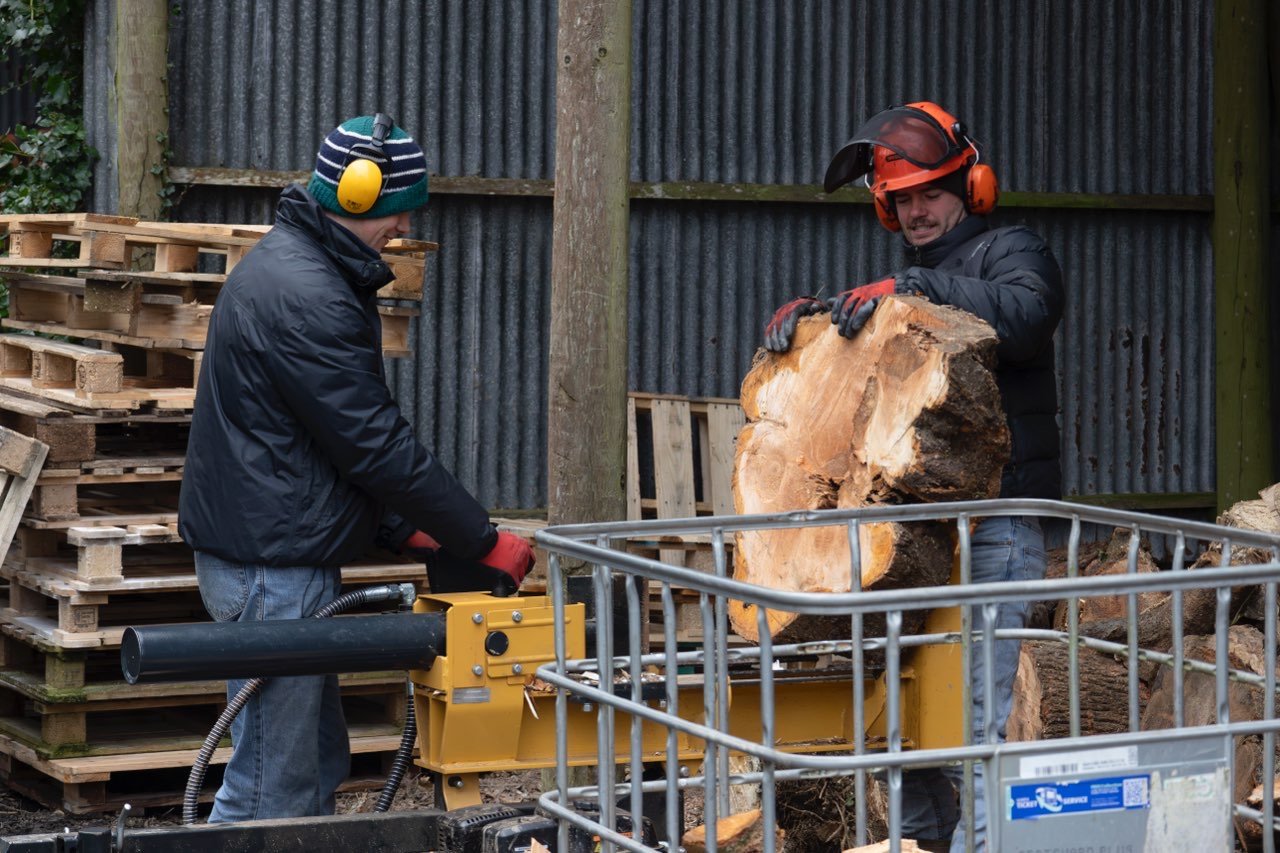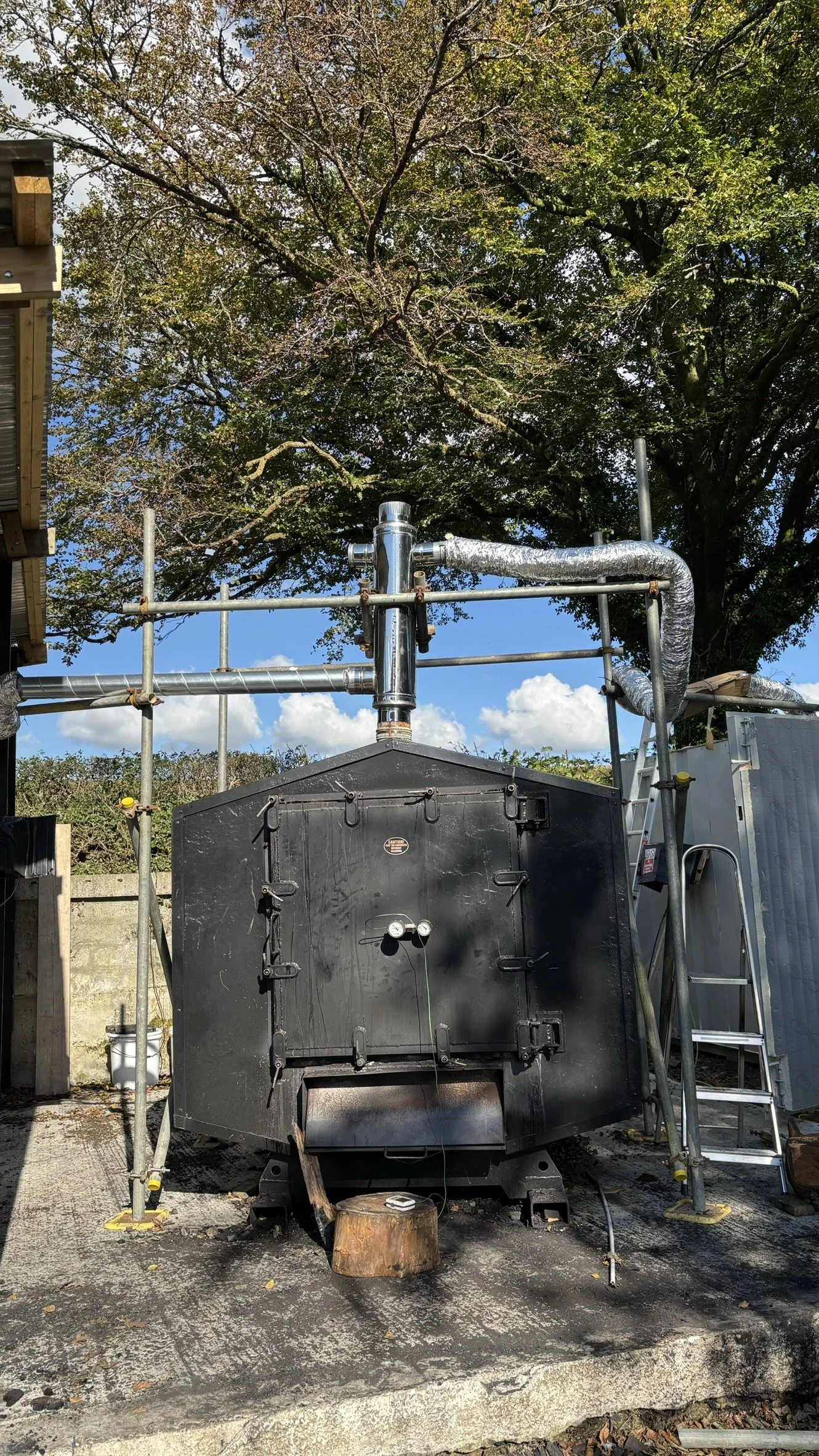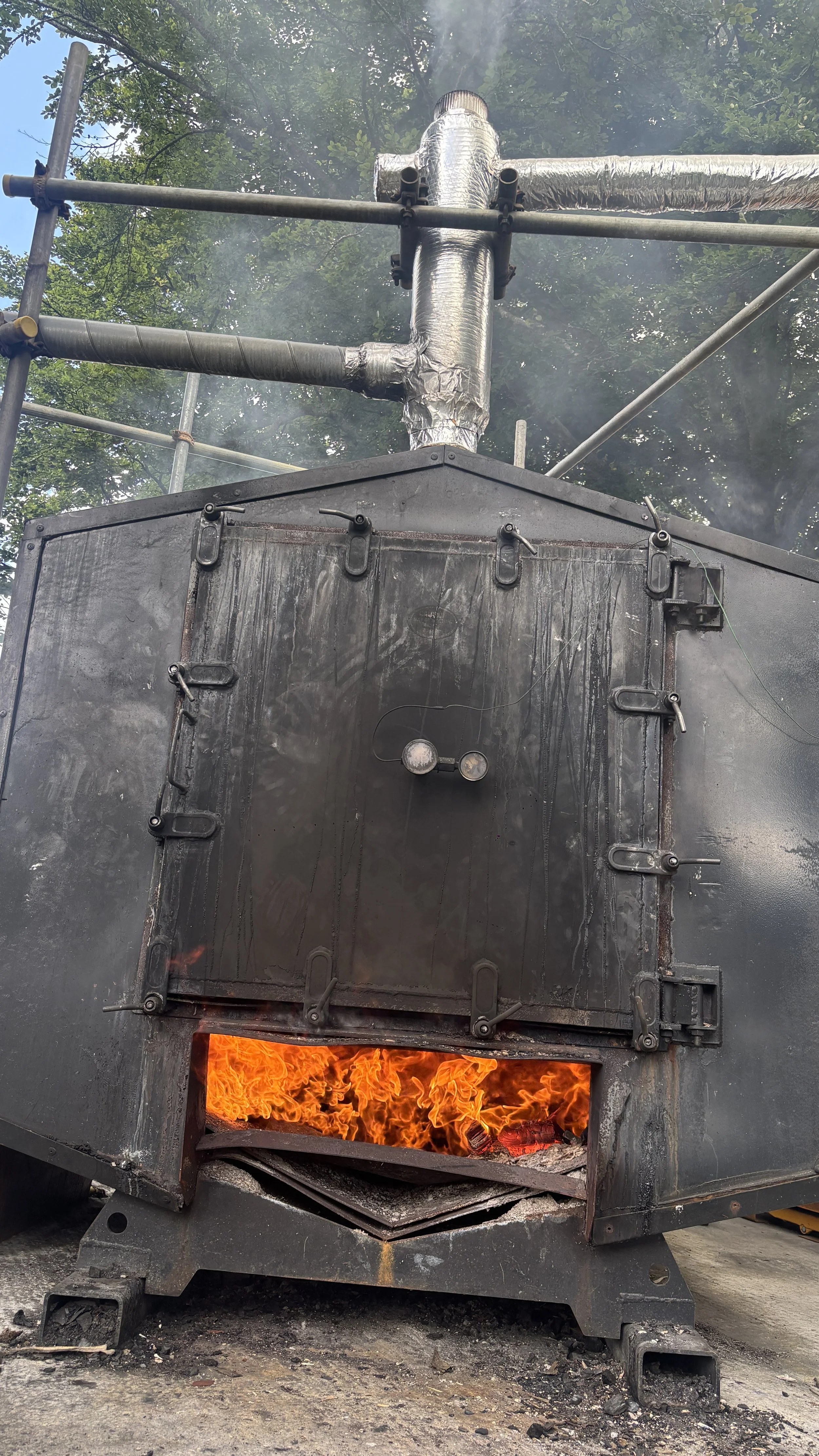Pyrolysis simplified: a detailed explanation of the biochar producing process
Pyrolysis is the thermal process behind biochar production. It involves heating organic material such as wood chips or crop residues at high temperatures in an environment without oxygen. This prevents burning and instead breaks down the material into three useful outputs: biochar, bio-oil, and syngas.
Biochar is a stable, carbon-rich solid that improves soil health and retains carbon in the ground for centuries. Bio-oil is a thick liquid that can be refined into fuel or chemicals. Syngas is a mix of gases that can be used to generate heat and power.
This process is increasingly used to manage organic waste and reduce carbon emissions. Studies show that biochar from clean feedstocks is safe to apply to land and can support environmental goals.
At Restord, we apply pyrolysis to turn local waste into biochar. Our biochar stores carbon and supports healthier soils. In this post, we explain how the process works, the types of products it creates, and why it matters for the climate.
The Science Behind Pyrolysis
At its core, pyrolysis is a way to break down natural materials like wood or crop waste using heat. But what makes it different from simply burning these materials is one key detail: there is no oxygen involved. This might seem like a small difference, but it changes everything.
When organic material burns in the presence of oxygen, it turns into ash and releases carbon dioxide into the air. In pyrolysis, oxygen is kept out of the system, so instead of burning, the material breaks apart chemically. Critically, you are not releasing carbon dioxide straight into the air.
Why Heat Without Oxygen Works
When biomass is heated without oxygen, it goes through a series of changes:
Moisture is removed: Most natural materials contain water. The first thing that happens in pyrolysis is that this moisture evaporates.
Chemical bonds break apart: The heat causes large molecules like cellulose and lignin (the building blocks of plants) to break down into smaller ones.
New substances are formed: These smaller pieces can become a gas, a thick oil, or a solid char, depending on how hot the process gets and how fast it happens.
Types of Pyrolysis
There are different ways to do pyrolysis, depending on what the goal is.
Slow pyrolysis uses lower heat and takes more time. It produces more solid biochar, which is ideal for long-term carbon storage and soil improvement.
Fast pyrolysis uses higher heat over a shorter time. This method creates more liquid (bio-oil) and gas (syngas) but less biochar.
What Influences the Outcome?
The type of material we use, known as feedstock, also affects what we get out of the process. For example:
Wood chips usually create more stable and high-quality biochar.
Straw or crop waste might produce more gas and oil, and a lighter form of biochar.
The temperature used also matters. Lower temperatures (around 400 degrees Celsius) produce more solid biochar. Higher temperatures (above 600 degrees) make more gas and oil.
The Three Key Outputs of Pyrolysis
Pyrolysis produces three distinct products. Each one has its own purpose and value, especially when used as part of a climate-focused strategy. These outputs are biochar, bio-oil, and syngas.
Biochar
Biochar is the solid material that remains after pyrolysis. It is rich in carbon and has a structure similar to charcoal. Biochar does not break down quickly. It stays in the soil for hundreds of years, helping to lock away carbon that would otherwise return to the atmosphere.
When added to soil, biochar improves its ability to hold water and nutrients. It also creates spaces for beneficial microbes to thrive. Farmers and growers value these qualities because they lead to healthier crops and reduced need for chemical inputs.
It’s also quite beneficial to the environment because it serves as a permanent carbon storage which is why it has become increasingly popular as a carbon removal method.
Bio-oil
Bio-oil is a thick, dark liquid that condenses from the vapours produced during pyrolysis. It contains a mix of organic compounds and can be used in several ways. Some facilities refine bio-oil to produce renewable fuels. Others explore its use in making chemicals or materials that would otherwise rely on fossil sources.
Its energy content makes it a useful by-product. While Restord focuses on biochar, bio-oil may offer future opportunities as part of a more complete waste-to-resource system.
Syngas
Syngas is a mixture of gases released during pyrolysis. It includes carbon monoxide, hydrogen, and methane. These gases are flammable and can be used to generate heat or electricity.
In many pyrolysis systems, the syngas is fed back into the process itself. This helps maintain the high temperatures needed to keep pyrolysis going, without relying on outside fuel sources. In other words, syngas can help power the system that produces it.
Together, these three outputs make pyrolysis more than just a method for waste reduction. It is a way to produce clean energy, support better farming, and remove carbon from the atmosphere in a stable, traceable way.
Pyrolysis Process: Step-by-Step Breakdown
Step 1: Preparing the Feedstock
At the beginning of the process, suitable organic material must be sourced and prepared. At Restord, we work in partnership with Plymouth Council and Cormac in Cornwall, who supply us with wood waste that would otherwise go unused.
Before it can be processed, depending on its size, the feedstock may need to be cut down into smaller pieces.
Restord’s wood splitting process
Also, it needs to be dried to reduce its moisture content. Drier material allows the pyrolysis process to be more efficient and consistent. At Restord, we use a heat recovery system. This means we capture and reuse heat from a previous pyrolysis cycle to dry the next batch of wood. It is a simple but effective way to reduce energy use and improve the sustainability of the overall system.
Image of Ashley, Restord’s pyrolysis machine with its heat recovery mechanism
Consistent preparation of the feedstock is important. It ensures that each cycle runs smoothly and that the quality of the biochar remains high.
Step 2: Heating Without Oxygen
Once the feedstock is prepared, it is placed in a sealed chamber where oxygen is removed or kept out. The temperature is gradually increased. Unlike burning, which happens when oxygen is present, this process prevents flames and instead causes the material to break down slowly.
As the temperature rises, the biomass begins to release vapours and gases. These are collected and separated into bio-oil and syngas. What remains in solid form becomes biochar.
The exact temperature and speed of heating affect what is produced. Lower temperatures and slower heating times create more biochar. Higher temperatures and faster reactions produce more oil and gas.
Pyrolysis in action
Step 3: Collecting the Outputs
As the biomass breaks down, the system captures all three outputs:
Biochar is left in the chamber and removed after cooling.
Bio-oil is condensed from vapours and stored in tanks.
Syngas is either stored or used immediately to help fuel the system.
Some advanced systems reuse the syngas to keep the pyrolysis chamber hot, which reduces the need for external fuel and makes the process more energy-efficient.
Step 4: Quality Control and Use
After collection, each product can be tested and processed further. At Restord, biochar is the primary output. It is tested for its carbon content and structure before being used in field trials or applied to soil. The goal is to make sure the product is both safe and effective.
FAQs About Pyrolysis
Is pyrolysis the same as burning?
No. Burning involves oxygen and results in combustion, which releases carbon dioxide and leaves behind ash. Pyrolysis happens without oxygen, so the material breaks down chemically rather than burning. This creates biochar, bio-oil, and syngas instead of smoke and ash.
Is pyrolysis safe for the environment?
Yes, when managed properly. Modern pyrolysis systems are enclosed and controlled to prevent harmful emissions. The process produces no open flames and very little waste. In fact, it turns waste into useful products and helps reduce overall emissions.
Can pyrolysis be done at home or on a small scale?
While the concept can be applied in smaller setups, proper pyrolysis requires specific temperatures and equipment to ensure safety and quality. Home experiments can be risky and are not recommended without the right knowledge and controls. For reliable results and environmental benefit, it is better carried out by trained professionals using certified systems.
Is all biochar the same?
No. The quality of biochar depends on the type of feedstock used, the temperature of the process, and how it is handled afterward. High-quality biochar is stable, safe for soil use, and effective at storing carbon. Poorly made biochar may contain contaminants or break down too quickly to be useful.
At Restord, we’re making biochar and exploring its real-world impact with UK farmers, businesses, and councils. Follow our journey on Grounded: A Climate Startup Journey, our award-winning podcast. Listen on Apple Podcasts and Spotify.




